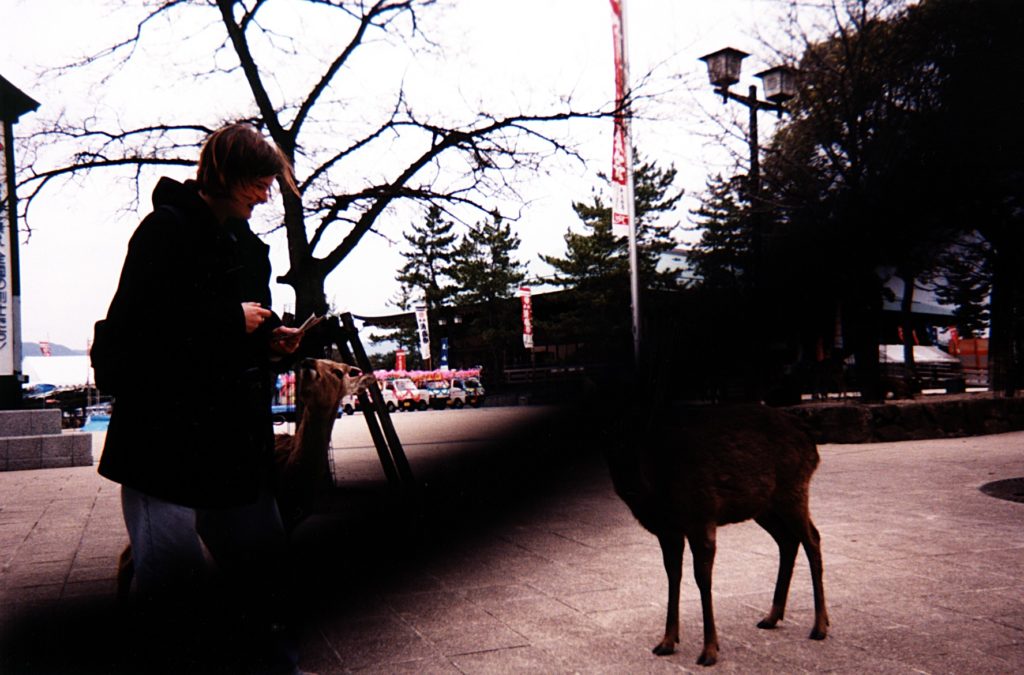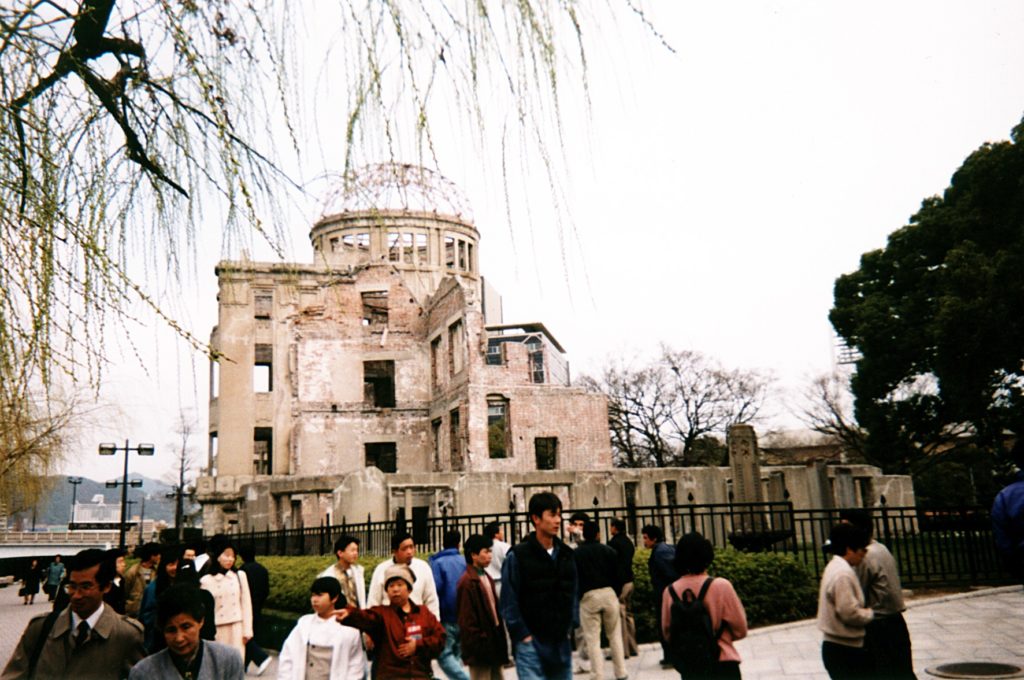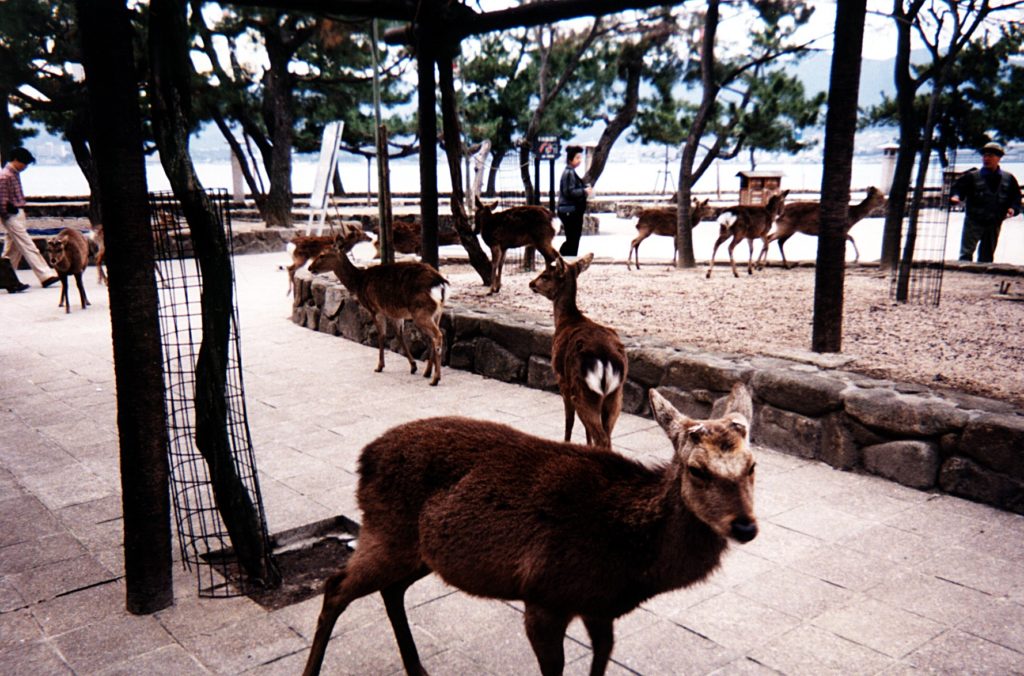Met a girl named Carie this morning. Carie is from Texas, and is currently studying in Japan for a year or so. She was on vacation from her studies, and seeing as how we were both traveling by ourselves, we hooked up after breakfast and went to see the Peace Park and Atom Bomb Museum, then to Miyajima island.

Carie struck me as a rather classic “rocker gal”. Some interesting stories about the party-crowd in Texas, and a interesting view of growing up in the states. I really quite liked Carie. Very straightforward, outspoken, and sharp. Anyway, we headed to the Atom Bomb dome first-off. It’s quite a somber structure – my first reaction was “I can’t believe I’m really here”. It’s really hard to imagine what happened at this same sight some 50 years ago. The bomb exploded at 500 meters almost directly above the remains of the bomb dome. I was actually quite surprised that at anything 500m from an atomic bomb detonation could’ve survived at all.
Following touring past the dome, we walked past the children’s memorial. This was created for all of the children who died in the bomb’s blast (the center of the bomb’s explosion was less than 800m from a school). There was a particularly touching story about a young girl who developed radiation sickness after the bombing, and believed that if she was able to fold 1,000 paper cranes, she would survive. While in the hospital, she folded over 1,100 cranes, however died shortly after from the radiation sickness. To this day, children and adults from throughout Japan, and from around the world send beautiful displays composed of folded paper cranes, which are placed near the monument. When I visited, there were hundreds of thousands of cranes around the memorial. A very emotional display. Some of the girl’s original cranes are on display in the bomb museum. The cranes were all folded from the wrappings of bandages and medical supplies – the only materials available to her in the hospital, after the bombing.
After leaving the children’s memorial, we headed for the main museum. I can’t really describe too much about the museum. You really have to (and should) see it for yourself. There are some intensely moving displays and exhibits within. Any descriptions, or pictures would not do justice to the exhibit, nor would they convey the emotions you experience looking at this first-hand. I would definitely not recommend ending a tour of Hiroshima with the Bomb Museum. Rather, start the day here, and after touring through, walk across to the second museum building, where there are a number of lounges where you can sit and discuss what you’ve seen. It’s almost necessary, as a way of “recovering” from what you see in the museum. Carie and myself went there afterwards, and I’m very happy we did. It let us explore some theories we had of why things turned out as they did in the war, and compare U.S. and Canadian perspectives.
On a lighter note, we ended the day, by leaving for the temple-island of Miyajima. Located approximately 5 km south of Hiroshima (across the bay), it is necessary to take a ferry to the island (I paid for the ferry, and found out later that it was covered by my JR Rail pass (argh)). As soon as you leave the ferry, you are immediately surrounded by the island’s deer population. All of whom are trying to beg morsels of food from you (or, in Carie’s case, eat your tour-map of the island). We toured around on Miyajima only for a little over an hour, as it was getting cold, dark, and windy. I resisted the temptation to load up on souvenirs, and decided to stick to a set of postcards, and take a few pictures on the beach.


Leave a Reply